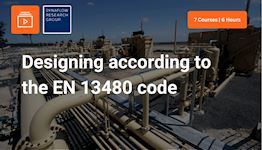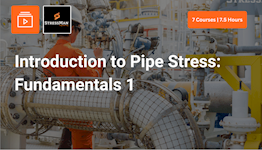Supporting and Load Conditions for Piping Systems
Why take this course?
This self-paced engineering course offers a comprehensive introduction to support types and load conditions in process piping systems. Through a series of video lectures, interactive quizzes, and practical examples, you'll explore common piping supports, the effects of stiffness, gaps, and friction, as well as the use of spring supports and steel structures. The course also covers process conditions, imposed displacements, occasional loads, and best practices for supporting a simple piping system. Upon completion, participants receive a certificate with PDH credits.
About the course
Want to get started with support types and load conditions in a process piping system?
In this Self-Paced course, participants will be taken through: common support types in a piping system, the impact of stiffness, gaps, and friction, spring supports and steel structures, process conditions, imposed displacements, and occasional loads, how to support a simple piping system.
Meet your instructor
Who should attend this course
• Junior piping engineers (0 to 3 years experience).• Those using pipe stress software who want to know what is behind the analysis.
• Pipe designers that want to increase their analysis capabilities.
Prerequisites
Basic understanding of piping systems is beneficial.Program & Details
-
Supporting & Load Conditions
1. Module introduction
2. Basic definitions and relations
3. Support types
4. Stiffness, gaps and friction
5. Spring supports
6. Steel structures
7. Process conditions
8. Imposed displacements
9. Occasional loads
10. Supporting a simple system
11. Summary
Certification


Why choose EngineeringTrainer
-
Unlimited Team-wide Access
-
Advance Technical Competences
-
Courses by Industry Authorities
Since using EngineeringTrainer our internal mentorship has a much more matured character.
Logan Chapman - COO at Chapman Consulting Inc.







